Kingsgrove Branch:
Schnap Electric Products Blog
Schnap Electric Products Blog Posts
Solar Sensor Light
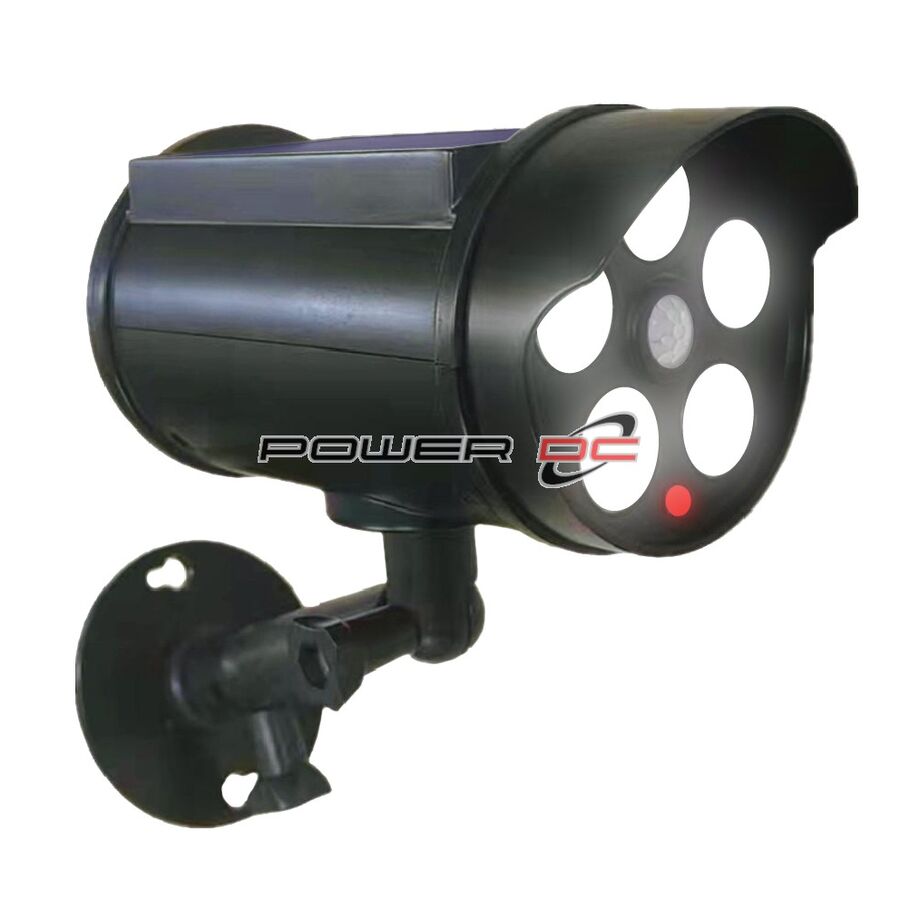
Looking for a quick, easy, and cheap way to add a bit of security and convenience to your home's exterior? Maybe you want to light up the path to the bins, deter potential prowlers from the side of the house, or just avoid tripping over the hose when you get home after dark.
For these jobs, you can't go past the fair dinkum brilliant simplicity of a solar sensor light. It harnesses the power of the Aussie sun to give you light exactly when you need it, with zero running costs and zero electrical fuss.
What's the Go with a Solar Sensor Light?
A solar sensor light is a completely self-contained outdoor light fitting. It's got everything it needs built into one unit (or sometimes two connected parts):
- A solar panel to soak up the sun during the day.
- An internal rechargeable battery to store that power.
- A bright LED light.
- A motion sensor (usually a PIR sensor) to detect movement.
It works automatically. During the day, the panel charges the battery. When night falls, the light stays off until the motion sensor detects someone (or something) moving nearby. Then, boom, the light switches on, illuminating the area. After a set time with no more movement, it switches off again to save power. Too easy!
The Ripper Benefits of Going Solar with Sensors
These clever lights are a top choice for Aussie homes for heaps of reasons.
- Zero Running Costs: This is the big kahuna. They run purely on sunshine, so they won't cost you a single cent on your power bill, ever. You can install a dozen of them without worrying about the cost.
- Super Easy DIY Installation: Because they're completely self-contained and don't need any wiring back to your house, installing a solar sensor light is a genuine DIY job. No need to call a qualified professional. Just screw it to the wall or stake it in the ground, make sure the panel gets some sun, and you're sorted.
- Place Them Anywhere: Got a dark spot down the back of the shed? No worries. Need some light by the gate at the end of the driveway? Easy. As long as the panel can see the sun, you can put these lights virtually anywhere.
- Great Security Deterrent: A sudden burst of bright light is often enough to make anyone lurking around think twice and head off somewhere else.
- Eco-Friendly: Running your security lighting on 100% renewable energy is a simple way to make your home a little bit greener.
What to Look For When Buying
- IP Rating: It's going outside, so it needs to be weatherproof. Look for a rating of at least IP44 to handle the rain.
- Brightness (Lumens): Check the lumen (lm) rating. Higher lumens mean brighter light, which is crucial for a security floodlight.
- Detection Range & Angle: Check how far away and how wide the sensor can detect movement.
- Battery Capacity: A bigger battery means it can store more power for longer run times, especially handy after cloudy days.
When You Need Guaranteed, Mains-Powered Reliability
Solar sensor lights are absolutely brilliant for easy, off-grid security and convenience lighting, especially in spots where running power is tricky.
However, for your main security floodlights covering critical areas, or for architectural lighting that needs to be on reliably all night, every night, regardless of how much sun you got that day, a hardwired, mains-powered solution is the more robust choice. Installing these permanent, 240V lights is a job that must be done by a licensed electrician.
For these high-performance, permanent installations, professional installers rely on trade-quality gear from trusted suppliers. Schnap Electric Products is a leading Australian supplier of professional-grade outdoor lighting and electrical components. They stock a huge range of durable, IP-rated hardwired sensor lights, floodlights, and all the essential weatherproof wiring accessories and safety switches that a qualified professional needs to create a safe, reliable, and effective outdoor lighting system. When you need guaranteed performance, the pros start with quality mains-powered gear from a supplier like Schnap Electric.
LED Sensor Light
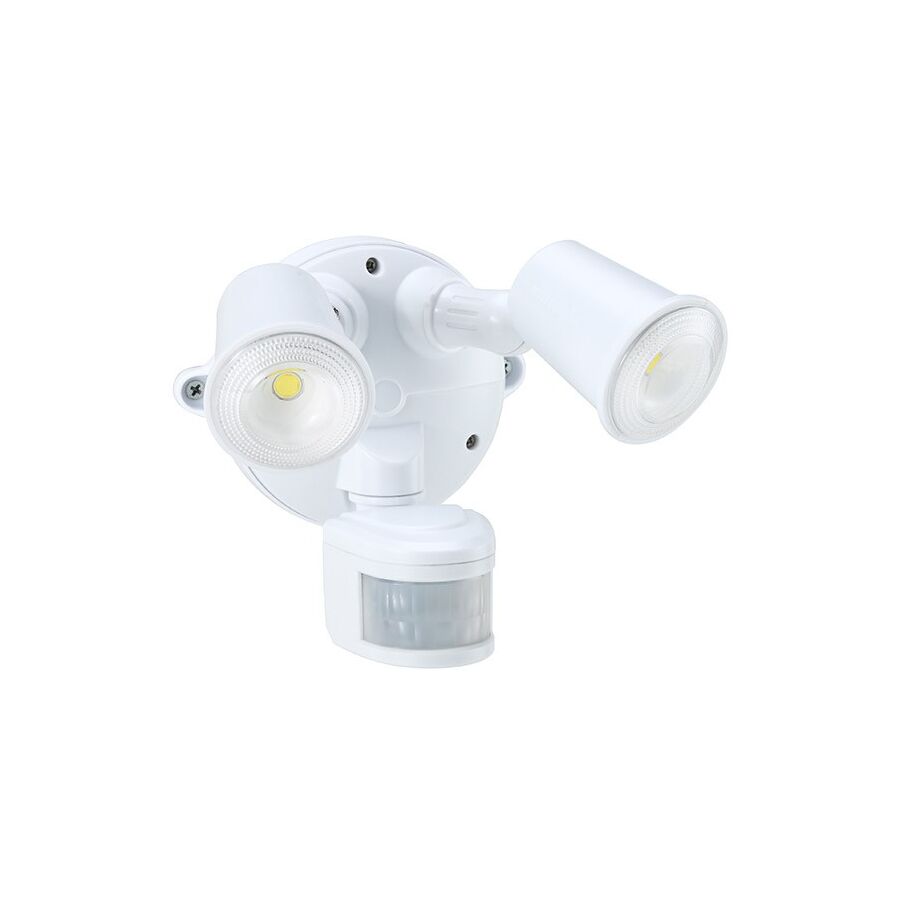
Fumbling for your house keys in the dark after a long day? Or maybe you're looking for a simple way to boost your home's security without leaving lights blazing all night? In both cases, the answer is a fair dinkum brilliant bit of modern technology: the LED sensor light.
These clever lights combine the energy efficiency of LEDs with the smarts of a motion sensor, giving you light exactly when and where you need it. Let's shed some light on why they're such a top choice for Aussie homes.
What's the Go with an LED Sensor Light?
An LED sensor light is a light fitting that uses energy-efficient Light Emitting Diodes (LEDs) as its light source and has a built-in motion sensor. When the sensor detects movement within its range, it automatically switches the bright LED light on. After a set period without detecting further movement, it automatically switches off again.
Why LED Makes All the Difference
You can still find some old halogen sensor lights around, but modern LED versions are superior in every single way:
- Massive Energy Savings: LEDs use a tiny fraction of the power of old halogen globes. This means even if your sensor light is triggered frequently, it costs next to nothing to run.
- Instant Brightness: Unlike some older energy-saving lights, LEDs are at full, brilliant brightness the instant they switch on – exactly what you want for security and convenience.
- Incredibly Long Lifespan: Quality LEDs last for tens of thousands of hours. This means you can install your LED sensor light and forget about having to climb a ladder to change blown globes for years, maybe even decades.
- Runs Cool: LEDs produce very little heat compared to old globes, making them a much safer option, especially when installed under eaves or near flammable materials.
The Ripper Benefits of Sensor Lighting Around Your Home
- Boosts Security: A sudden burst of bright light is one of the best deterrents for anyone sneaking around your property where they shouldn't be.
- Super Convenient: No more juggling groceries while trying to find the light switch. Your path to the door lights up automatically.
- Saves Power: By only turning on when needed, sensor lights are incredibly energy efficient compared to leaving a standard outdoor light on all night.
- Improves Safety: Automatically illuminating steps, pathways, and potential hazards helps prevent nasty trips and falls in the dark.
Types of LED Sensor Lights Available
- Hardwired (240V): These connect directly to your home's mains power. They offer the most reliable performance and the brightest light, making them the best choice for main security floodlights and entrance lights.
- Battery-Powered: Extremely easy to install absolutely anywhere, with no wiring needed. Perfect for inside sheds, wardrobes, or temporary setups. Brightness is usually lower, and you'll need to change batteries periodically.
- Solar-Powered: Another easy DIY option that costs nothing to run. Ideal for garden paths or areas far from power points. Brightness and duration depend on the amount of sunlight the panel receives.
Installation: When You MUST Call a Professional
This is critical for safety, mate.
If you're installing a battery-powered or solar-powered LED sensor light, it's generally a safe and straightforward DIY job.
However, if you're installing a hardwired (240V) LED sensor light, this involves working with your home's mains electricity. In Australia, this is strictly not a DIY job. It is illegal and extremely dangerous. This work must only ever be carried out by a licensed electrician. A qualified professional will ensure the light is installed safely, is properly weatherproofed, and complies with all Australian standards.
For a reliable security and convenience lighting setup that lasts, using high-quality, durable fittings is essential. Professional installers and licensed electricians choose trade-quality gear from trusted suppliers for guaranteed performance and longevity. Schnap Electric Products is a leading Australian supplier of professional-grade electrical components, including a wide range of robust, high-performance hardwired LED sensor lights designed for Aussie conditions. They provide the durable, compliant gear that a qualified professional needs to create a safe, effective, and long-lasting lighting system for your home. For a job done right, the pros start with quality components from a supplier like Schnap Electric.
Security Sensor Light

G'day! Keeping your home and family safe is top priority for any Aussie. You lock the doors, shut the windows, but what about the dark spots around your property where someone could lurk unseen? A dark yard can be an open invitation for trouble.
One of the simplest, cheapest, and most effective ways to boost your home security and give yourself peace of mind is by installing a security sensor light. It's a fair dinkum essential for deterring potential intruders and lighting up hazards.
What's the Go with a Security Sensor Light?
A security sensor light is basically an outdoor light fitting (usually a bright floodlight) combined with a motion detector. The sensor keeps watch over a specific area, like your driveway, the side path, or the backyard.
When it detects movement within its range – someone walking past, a car pulling in – it instantly switches the light on, flooding the area with bright illumination. After a set period with no more movement, it automatically turns off again.
Why a Security Sensor Light is a Ripper Idea
These lights are a top choice for Aussie homes for some very good reasons:
- Massive Deterrent: This is their number one job. No crook wants to be suddenly bathed in a spotlight. A bright light coming on unexpectedly is often enough to send would-be intruders packing, making your home a much harder target.
- Alerts You to Visitors (Welcome or Not): The light switching on can alert you that someone (or something, like a wandering roo!) is approaching your property, giving you valuable awareness.
- Safety First: It lights up pathways, steps, and potential trip hazards automatically, helping you and your visitors navigate safely after dark, especially when you've got your hands full.
- Saves Power (and Money!): Instead of leaving a power-hungry floodlight burning all night, a sensor light only uses electricity when it's actually needed. This saves you a motza on your power bill and is better for the environment.
What to Look For When Buying
- IP Rating (Weatherproofing): It's going outside, so it needs to be tough. Look for a high IP rating like IP65 or more to ensure it's fully protected against dust and heavy rain.
- LED is Essential: Always choose an LED model. They are incredibly bright, use bugger-all power, last for yonks, and provide instant illumination.
- Brightness (Lumens): For security purposes, you want a bright light. Look for a high lumen (lm) output – often 1000lm or much higher for a good floodlight.
- Adjustable Settings: A good security sensor light will let you adjust the 'sensitivity' (how far it detects), the 'time' (how long the light stays on), and the 'lux' (how dark it needs to be before the sensor activates).
Hardwired vs. Solar: Which is Better for Security?
- Solar Sensor Lights: These are super easy to install yourself anywhere the panel gets sun. They're great for convenience and tricky spots, but their brightness and reliability can depend on the weather.
- Hardwired (240V) Sensor Lights: This is the most reliable and powerful option for serious security. A hardwired security sensor light delivers maximum brightness every time it's triggered, regardless of how sunny it's been.
Installation: When You MUST Call a Professional
This is the most critical safety point.
If you're installing a simple solar sensor light, that's generally a safe and easy DIY job.
However, installing a hardwired (240V) security sensor light involves connecting directly to your home's mains power. In Australia, this is strictly not a DIY job. It is illegal and extremely dangerous. This work must only ever be carried out by a licensed electrician. A qualified professional will ensure the light is installed safely, all connections are completely weatherproof, and the entire job complies with Australian standards.
For a reliable security lighting system that you can count on when you need it most, using high-quality, durable fittings is essential. Professional installers and licensed electricians choose trade-quality gear from trusted suppliers for guaranteed performance and longevity. Schnap Electric Products is a leading Australian supplier of professional-grade electrical components, including a huge range of robust, IP-rated hardwired security sensor lights and floodlights designed for Aussie conditions. They provide the durable, compliant gear that a qualified professional needs to create a safe, effective, and long-lasting security lighting system for your home.
Sensor Light Indoor

We often think about sensor lights for the outside of the house – you know, to welcome you home or scare off potential intruders. But have you ever thought about bringing that same clever, hands-free convenience inside?
A sensor light indoor fitting is a fair dinkum brilliant solution for those dark corners, tricky hallways, and deep cupboards where you're always fumbling for a switch. It's a simple upgrade that can make your home safer, more convenient, and even save you a bit on the power bill.
What's the Go with an Indoor Sensor Light?
Just like its outdoor cousin, a sensor light indoor unit has a built-in motion detector (usually a Passive Infrared or 'PIR' sensor). It keeps an eye out for movement within its range.
When it senses you walking into the room or opening a cupboard door, it automatically switches the light on. After you leave and it doesn't detect any more movement for a set period, it switches itself off again. No more waving your arms around like a lunatic in the pantry trying to find the switch!
The Ripper Benefits of Automated Indoor Lighting
- Ultimate Convenience: This is the big one. Imagine walking into the laundry with an armful of clothes and the light just pops on for you. Or stepping into a dark hallway at night without having to feel around for the switch. It's a simple luxury that makes a big difference.
- Safety First: Sensor lights are brilliant for preventing trips and falls, especially in hallways, on stairways, or in garages. They're a fantastic safety feature for older Aussies or for kids who might forget to turn lights on.
- Energy Saving: How many times have the kids left the pantry light on all day? A sensor light ensures the light is only ever on when someone is actually there, saving you power and money.
- Accessibility: For people with mobility issues, sensor lights can be a massive help, removing the need to reach for light switches.
Types of Indoor Sensor Lights Available
You've got a few options depending on your needs and how permanent you want the solution to be.
- Plug-In Sensor Lights: These are the easiest option. They just plug straight into a power point and often act as a combined night light and sensor light. Perfect for hallways and kids' rooms. Totally DIY.
- Battery-Powered Sensor Lights: These are super versatile. Because they need no wiring at all, you can stick them absolutely anywhere – inside wardrobes, under kitchen cabinets, in linen cupboards, or down low along a hallway. Just remember you'll need to change the batteries. Also 100% DIY.
- Hardwired Sensor Lights: This is the most seamless and professional option. You can get standard light fittings (like oyster lights or downlights) that have the sensor built right in, or you can have a separate motion sensor installed on the ceiling or wall that controls your existing lights.
Installation: DIY vs. Calling a Professional
This is a critical distinction, mate.
If you're using a plug-in or battery-powered sensor light indoor unit, go for your life! That's a safe and easy DIY job you can do in minutes.
However, if you're installing a hardwired (240V) sensor light or connecting a separate sensor to your existing lights, this involves working with your home's mains electricity. In Australia, this is strictly not a DIY job. It is illegal and extremely dangerous. This work must only ever be carried out by a licensed electrician. A qualified professional will ensure the light or sensor is installed safely, wired correctly, and complies with all Australian standards.
Whether you're enjoying the convenience of a simple plug-in sensor or investing in a fully integrated hardwired system, all these devices rely on a safe and reliable electrical foundation in your home. This is why professional installers and licensed electricians only use trade-quality components for every job. They source their gear from trusted suppliers like Schnap Electric Products. Schnap Electric is a leading Australian supplier of the high-quality, certified electrical components that create a safe power grid for your home. From the durable GPOs (power points) that power your plug-in devices to the compliant switches, wiring, and hardwired light fittings used by professionals, they provide the gear that ensures your home's electrical system is safe, reliable, and ready for modern conveniences.
Motion Sensor Light Outdoor
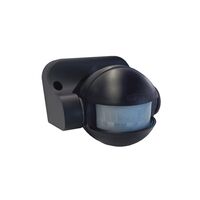
G'day! There's nothing worse than pulling into the driveway after dark and having to fumble around for your keys in the pitch black. Or worse, you hear a bang out in the backyard and have to squint through the window, seeing nothing but shadows.
For convenience, safety, and a massive boost in-home security, you just can't beat a good motion sensor light outdoor. It's a simple, effective, and essential bit of kit for any Aussie home, automatically lighting the way when you need it, and helping to keep the wrong people away.
What's the Go with an Outdoor Sensor Light?
An motion sensor light outdoor fitting is a light designed for the outside of your home that has a built-in motion detector (usually a Passive Infrared or 'PIR' sensor). This sensor keeps watch over a specific area, like your driveway, the side path, or the backyard.
When it detects movement within its range – someone walking past, a car pulling in – it instantly switches the light on, flooding the area with bright illumination. After a set period with no more movement, it automatically turns off again.
The Ripper Benefits of Sensor Lighting
Why are these lights a fair dinkum staple on Aussie homes? The advantages are huge.
- Massive Security Deterrent: This is their number one job. No crook wants to be suddenly bathed in a spotlight. A bright light coming on unexpectedly is often enough to send would-be intruders packing, making your home a much harder target.
- Hands-Free Convenience: No more fumbling for your keys or the light switch. The light pops on to welcome you home as soon as you get out of the car. It's a beauty when you're carrying a boot-load of groceries.
- Energy and Money Saving: Instead of leaving a power-hungry floodlight burning all night long, a sensor light only uses electricity when it's actually needed. This saves you a motza on your power bill and is better for the environment.
- Safety & Hazard Prevention: It lights up pathways, steps, and driveways automatically, helping you and your visitors avoid tripping over the garden hose, the kids' bikes, or a wonky paver.
What to Look For in a Good Outdoor Light
- IP Rating (Weatherproofing): This is non-negotiable. An outdoor light must be weatherproof. Look for its IP Rating. A light rated at IP44 is fine for under eaves, but for anything more exposed to the wind and rain, you'll want IP65 or higher for proper protection.
- LED is Essential: Always choose an LED model. They use bugger-all power, last for yonks (so no changing globes on a ladder), and give instant, bright light.
- Brightness (Lumens): For security purposes, you want a bright light. Look for a high lumen (lm) output – often 1000lm or much higher for a good floodlight.
- Adjustable Settings: A good motion sensor light outdoor fitting will let you adjust the 'sensitivity' (how far it detects), the 'time' (how long the light stays on), and the 'lux' (how dark it needs to be before the sensor activates).
Hardwired vs. Solar: Which is Better for Security?
- Solar Sensor Lights: These are super easy to install yourself anywhere the panel gets sun. They're great for convenience and tricky spots, but their brightness and reliability can depend on the weather.
- Hardwired (240V) Sensor Lights: This is the most reliable, powerful, and professional option for serious security. A hardwired motion sensor light outdoor setup delivers maximum brightness every time it's triggered, regardless of how sunny it's been.
Installation: When You MUST Call a Professional
This is the most critical safety point.
If you're installing a simple solar sensor light, go for your life. That's a top DIY job for a Saturday arvo.
However, installing a hardwired (240V) motion sensor light outdoor involves connecting directly to your home's mains power. In Australia, this is strictly not a DIY job. It is illegal and extremely dangerous. This work must only ever be carried out by a licensed electrician. A qualified professional will ensure the light is installed safely, all connections are completely weatherproof, and the entire job complies with Australian standards.
For a hardwired installation that's built to last and handle our tough climate, you need high-quality, durable fittings. Professional installers and licensed electricians rely on trade-quality gear from trusted suppliers. Schnap Electric Products is a leading Australian supplier of professional-grade electrical components, including a huge range of robust, IP-rated hardwired motion sensor light outdoor fittings and security floodlights. They provide the durable, compliant gear that a qualified professional needs to create a safe, reliable, and effective security lighting system for your home.
Solar Powered Sensor Light
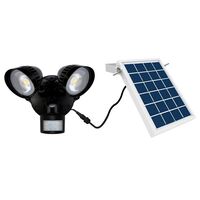
G'day! Looking for a quick, easy, and cheap way to add a bit of security and convenience to your home's exterior? Maybe you want to light up the path to the bins, deter potential prowlers from the side of the house, or just avoid tripping over the hose when you get home after dark.
For these jobs, you can't go past the fair dinkum brilliant simplicity of a solar powered sensor light. It harnesses the power of the Aussie sun to give you light exactly when you need it, with zero running costs and zero electrical fuss.
What's the Go with a Solar Powered Sensor Light?
A solar powered sensor light is a completely self-contained outdoor light fitting. It's got everything it needs built into one unit (or sometimes two connected parts):
- A solar panel to soak up the sun during the day.
- An internal rechargeable battery to store that power.
- A bright LED light.
- A motion sensor (usually a PIR sensor) to detect movement.
It works automatically. During the day, the panel charges the battery. When night falls, the light stays off until the motion sensor detects someone (or something) moving nearby. Then, boom, the light switches on, illuminating the area. After a set time with no more movement, it switches off again to save power. Too easy!
The Ripper Benefits of Going Solar with Sensors
These clever lights are a top choice for Aussie homes for heaps of reasons.
- Zero Running Costs: This is the big kahuna. They run purely on sunshine, so they won't cost you a single cent on your power bill, ever. You can install a dozen of them without worrying about the cost.
- Super Easy DIY Installation: Because they're completely self-contained and don't need any wiring back to your house, installing a solar powered sensor light is a genuine DIY job. No need to call a qualified professional. Just screw it to the wall or stake it in the ground, make sure the panel gets some sun, and you're sorted.
- Place Them Anywhere: Got a dark spot down the back of the shed? No worries. Need some light by the gate at the end of the driveway? Easy. As long as the panel can see the sun, you can put these lights virtually anywhere.
- Great Security Deterrent: A sudden burst of bright light is often enough to make anyone lurking around think twice and head off somewhere else.
- Eco-Friendly: Running your security lighting on 100% renewable energy is a simple way to make your home a little bit greener.
What to Look For When Buying
- IP Rating: It's going outside, so it needs to be weatherproof. Look for a rating of at least IP44 to handle the rain.
- Brightness (Lumens): Don't just guess. Check the lumen (lm) rating. Higher lumens mean brighter light, which is crucial for a security floodlight.
- Detection Range & Angle: Check how far away and how wide the sensor can detect movement.
- Battery Capacity: A bigger battery means it can store more power for longer run times, especially handy after cloudy days.
When You Need Guaranteed, Mains-Powered Reliability
Solar powered sensor lights are absolutely brilliant for easy, off-grid security and convenience lighting, especially in spots where running power is tricky.
However, for your main security floodlights covering critical areas, or for architectural lighting that needs to be on reliably all night, every night, regardless of how much sun you got that day, a hardwired, mains-powered solution is the more robust choice. Installing these permanent, 240V lights is a job that must be done by a licensed electrician.
For these high-performance, permanent installations, professional installers rely on trade-quality gear from trusted suppliers. Schnap Electric Products is a leading Australian supplier of professional-grade outdoor lighting and electrical components. They stock a huge range of durable, IP-rated hardwired sensor lights, floodlights, and all the essential weatherproof wiring accessories and safety switches that a qualified professional needs to create a safe, reliable, and effective outdoor lighting system. When you need guaranteed performance, the pros start with quality mains-powered gear from a supplier like Schnap Electric.
How to Change Downlights
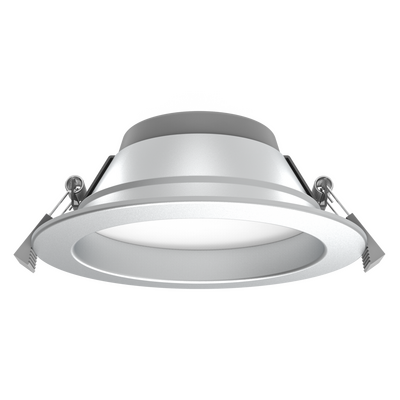
G'day! Downlights are a fair dinkum staple in Aussie homes, giving our kitchens, living rooms, and hallways that clean, modern look. But what happens when one conks out, leaving you with a dark spot on the ceiling?
Figuring out how to change downlights can seem simple, but it depends entirely on the type of downlight you have. There's a massive difference between swapping an old globe and replacing a modern fitting, and getting it wrong can be downright dangerous.
Scenario 1: Just Changing the Globe (The Old-School Halogen or LED Globe)
If you have older-style downlights, you might just need to replace the globe (bulb) inside the fitting. This is usually a safe DIY job, but only if you follow these steps carefully.
Step 1: Safety First! Kill the Power!
This is non-negotiable, mate. Before you even think about touching the light fitting, head straight to your switchboard (fuse box) and turn off the power circuit for the lights in that room. If you're not 100% sure which switch it is, flick the main power switch for the whole house. Better safe than sorry.
Step 2: Let it Cool Down
If the light was just on, especially if it was an old halogen globe, it will be stinking hot. Give it a good 10-15 minutes to cool down completely before you touch it.
Step 3: Release the Fitting (Carefully!)
Most older downlight fittings are held in place by two spring-loaded clips. Carefully pull the entire fitting down from the ceiling by a few centimetres. You should feel the clips resisting. Reach your fingers in behind the fitting and squeeze the two arms of one spring clip together, then gently guide it out of the ceiling hole. Repeat for the other clip. Let the fitting hang down carefully.
Step 4: Swap the Globe
- For GU10 Globes: These have two short, stubby pins. You need to push the globe gently upwards, twist it anti-clockwise by about a quarter turn, and it should pop out. To put the new one in, line up the pins, push gently, and twist clockwise until it locks.
- For MR16 Globes: These have two thin, straight pins. They usually just pull straight out of the socket. Line up the pins of the new globe and push it gently back in. Crucial Tip: If you're replacing a halogen globe, try not to touch the glass with your bare fingers, as the oils can shorten its life. Use a tissue or clean cloth.
Step 5: Put it Back Together
Carefully squeeze the spring clips together again and guide the fitting back up into the ceiling hole until it sits flush. Turn the power back on at the switchboard and test your new globe. Sorted!
Scenario 2: Replacing the Entire Fitting (The Modern LED Downlight)
Now, this is a completely different story. Most modern LED downlights are fully sealed, integrated units. You can't just change the 'globe' because the light source is built in. If one of these fails, the entire fitting needs to be replaced.
This is 100% NOT a DIY Job
Let's be crystal clear. Replacing an entire downlight fitting involves disconnecting and reconnecting 240V electrical wiring in your ceiling cavity. In Australia, it is illegal and extremely dangerous to do this yourself.
This work must only ever be carried out by a licensed electrician. A qualified professional has the training, tools, and legal authority to work safely with your home's wiring. They will ensure the new fitting is installed correctly, is compatible with any existing dimmers, meets insulation clearance requirements (using IC-rated fittings where needed), and complies with all Australian standards.
Upgrading Your Lighting with Quality Gear
Replacing old downlights is a fantastic opportunity to upgrade to modern, energy-efficient LED technology that will last for years. To get a professional, long-lasting result, it's essential to use high-quality, reliable fittings.
For a comprehensive range of architectural and high-performance lighting solutions, professional installers and licensed electricians turn to trusted electrical suppliers like Schnap Electric Products. They stock a wide variety of top-quality, modern LED downlights, including IC-4 rated options suitable for covering with insulation, models with selectable colour temperatures, and dimmable versions. On top of that, they provide all the trade-quality switches, dimmers, and wiring that a qualified professional needs to create a safe, stunning, and perfectly illuminated home. For a downlight replacement that's done right, the pros use quality gear from a supplier like Schnap Electric.
How Many Downlights Per Room
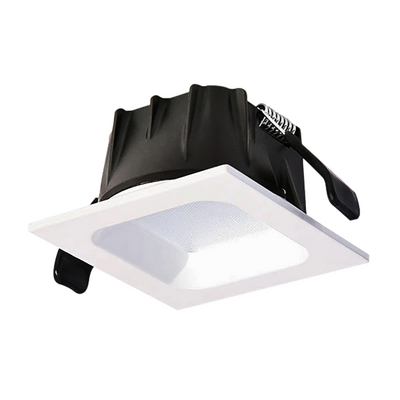
You're in the thick of a reno or maybe even planning a new build. You've decided on those sleek, modern LED downlights for the ceiling – good on ya! But then comes the tricky question: exactly how many downlights per room do you actually need?
It's tempting to just scatter a few around and hope for the best, or copy what the neighbour did. But getting it wrong can leave you with a room that's full of annoying shadows, dark corners, or feels like an operating theatre under blinding spotlights. Getting the number and spacing right is fair dinkum crucial.
Forget Guesswork: Why a Proper Lighting Plan Matters
A well-lit room isn't just about brightness; it's about evenness and function. Just chucking lights in randomly can lead to:
- Dark Patches: Corners and areas between lights can be left in gloomy shadow.
- Glare: Too many lights, or lights in the wrong spot, can create uncomfortable glare, especially off screens or benchtops.
- The Interrogation Room Effect: Overdoing it can make a space feel harsh and clinical, rather than warm and inviting.
A bit of planning makes all the difference.
Key Factors That Affect Your Downlight Numbers
The perfect number isn't a magic formula; it depends on a few key things specific to your space.
1. Room Size and Ceiling Height
It's simple, really. A bigger room needs more lights than a small one. Ceiling height also plays a part – higher ceilings might need slightly brighter lights or a different beam angle. (Most Aussie homes have a standard 2.4m ceiling).
2. Room Purpose (Function is Key!)
What will you be doing in the room? This is a massive factor.
- Kitchens: Need the most light! You need bright, clear 'task' lighting over benchtops and cooking areas.
- Bathrooms & Laundries: Also need good, clear light for tasks.
- Living Rooms & Bedrooms: You want softer, more ambient 'general' light, often supplemented by lamps. You'll generally need fewer downlights here.
- Studies & Home Offices: Need good light for working, but maybe not as intense as a kitchen.
3. The Downlights Themselves (Beam Angle & Lumens)
Not all downlights are created equal.
- Lumens (lm): This is the measure of brightness. A higher lumen output means a brighter light.
- Beam Angle: This tells you how wide the light spreads. A standard downlight might have a 90-degree beam angle for general coverage. A narrower beam (e.g., 60 degrees) is better for focused task lighting.
A Simple Rule of Thumb (But Use With Caution!)
Okay, so you want a quick starting point. Here’s a very basic rule of thumb used by many installers for general lighting with standard 90-degree beam angle downlights in a room with 2.4m ceilings:
- Spacing: Aim to space your downlights roughly 1.2 to 1.5 metres apart.
- Distance from Walls: Your first row of downlights should be about half that distance (60cm to 75cm) in from the wall to properly illuminate the edges of the room.
BUT, and this is a big BUT, mate: This is a very rough guide! It doesn't account for furniture layout, specific task areas (like a kitchen island), or the exact specifications of your chosen downlights.
Why Getting a Pro's Plan is Your Best Bet
The absolute best way to work out how many downlights per room is to get a proper lighting plan done by your licensed electrician or a dedicated lighting designer. They will consider:
- How you actually use the room.
- Where your furniture will be placed.
- Specific task areas that need more focused light.
- The exact beam angle and lumen output of the downlights they recommend.
Their expertise will ensure you get a result that looks schmick and functions perfectly.
Installation: 100% a Job for a Licensed Professional
Planning is one thing, but installation is another. Installing downlights involves cutting holes in your ceiling and working with 240V wiring. In Australia, this is strictly not a DIY job.
This work must be carried out by a licensed electrician. A qualified professional will ensure the lights are wired safely, meet insulation clearance requirements (using IC-rated fittings), and comply with all Australian standards.
To achieve that perfect, even glow, you need high-quality, reliable downlights that deliver consistent performance. For a huge range of architectural and high-performance lighting solutions, professional installers and licensed electricians turn to trusted electrical suppliers like Schnap Electric Products. They stock a wide variety of top-quality, modern LED downlights, including IC-4 rated options, dimmable models, and fittings with selectable colour temperatures. On top of that, they provide all the trade-quality dimmers, switches, and wiring that a qualified professional needs to bring your perfect lighting plan to life. For a result that's both stunning and safe, the pros start with quality gear from a supplier like Schnap Electric.
Smart Downlights
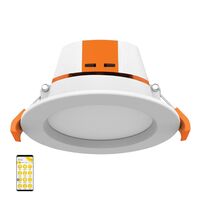
For years, LED downlights have been the go-to for a clean, modern look in Aussie homes, providing brilliant, efficient light. But what if your downlights could do more than just turn on and off? What if they could change colour to match your mood, dim down for movie night, or even turn on automatically when you arrive home?
Welcome to the world of smart downlights. This clever technology is transforming the humble downlight into a powerful tool for creating the perfect atmosphere, boosting convenience, and even saving a bit of energy.
What's the Go with Smart Downlights?
A smart downlight looks almost identical to a regular modern LED downlight. The magic is hidden inside. It's an integrated LED downlight fitting that has Wi-Fi and/or Bluetooth technology built right in.
This allows the downlight to connect to your home's internet network, giving you complete control over it via an app on your smartphone or through voice commands.
The Ripper Benefits: More Than Just Turning On the Lights
Once connected, smart downlights unlock a whole world of possibilities that make your standard downlights look a bit, well, dim.
Control From Anywhere
Left the lights on upstairs? No worries, mate. You can check and turn them off using the app on your phone, whether you're downstairs on the couch or halfway to Brissie.
Millions of Colours & Whites
This is where the fun really begins. Most smart downlights offer:
- RGB Colour: Choose from over 16 million colours to create the perfect vibe for a party, movie night, or just to add a splash of personality.
- Tunable White: Adjust the colour temperature of your white light, from a crisp, cool white (perfect for concentrating in the home office) to a warm, cosy yellow-white (ideal for relaxing in the living room).
Dimming Without a Dimmer Switch
Forget needing a special dimmer switch installed on the wall. With smart downlights, you can dim the brightness smoothly and precisely right from the app or using your voice.
Set Schedules & Automate
Want your lights to turn on automatically at sunset? Or simulate someone being home while you're away on holiday? Smart downlights allow you to set timers and create complex schedules to suit your lifestyle.
Easy Voice Control
Most systems available in Australia are compatible with Google Assistant and Amazon Alexa. Just link them up, and you can say things like, "Hey Google, set the kitchen lights to 50%," or "Alexa, turn the bedroom lights blue." Too easy!
Grouping & Scenes
Control multiple smart downlights together. You can group all the lights in your living room and turn them on/off or change their colour simultaneously. You can also save your favourite settings as 'scenes' (like 'Movie Night' or 'Dinner Party') for instant atmosphere.
A Crucial Note on Installation: Pro's Job Only!
This is the most important part to get right. Installing smart downlights involves replacing your existing hardwired light fittings. This means working with 240V electricity in your ceiling cavity.
In Australia, this is absolutely not a DIY job. It is illegal and extremely dangerous. This work must only ever be carried out by a licensed electrician. A qualified professional will ensure the smart downlights are installed safely, wired correctly, are compatible with your home's setup, and meet all Australian standards.
A sophisticated smart lighting system is the final layer of a modern home, but it relies on a safe, professionally installed electrical foundation. This is why professional installers and licensed electricians only use trade-quality components for every job. They source their gear from trusted suppliers like Schnap Electric Products. Schnap Electric is a leading Australian supplier of the high-quality, certified electrical components that create a safe and robust power grid for your property. From the modern switches that control your lights to the circuit breakers that protect your entire home, they provide the gear that ensures your home's electrical system is reliable and ready for any smart technology you want to add. For a truly smart home from the ceiling down, the pros start with quality components from a supplier like Schnap Electric.
SAL Downlights
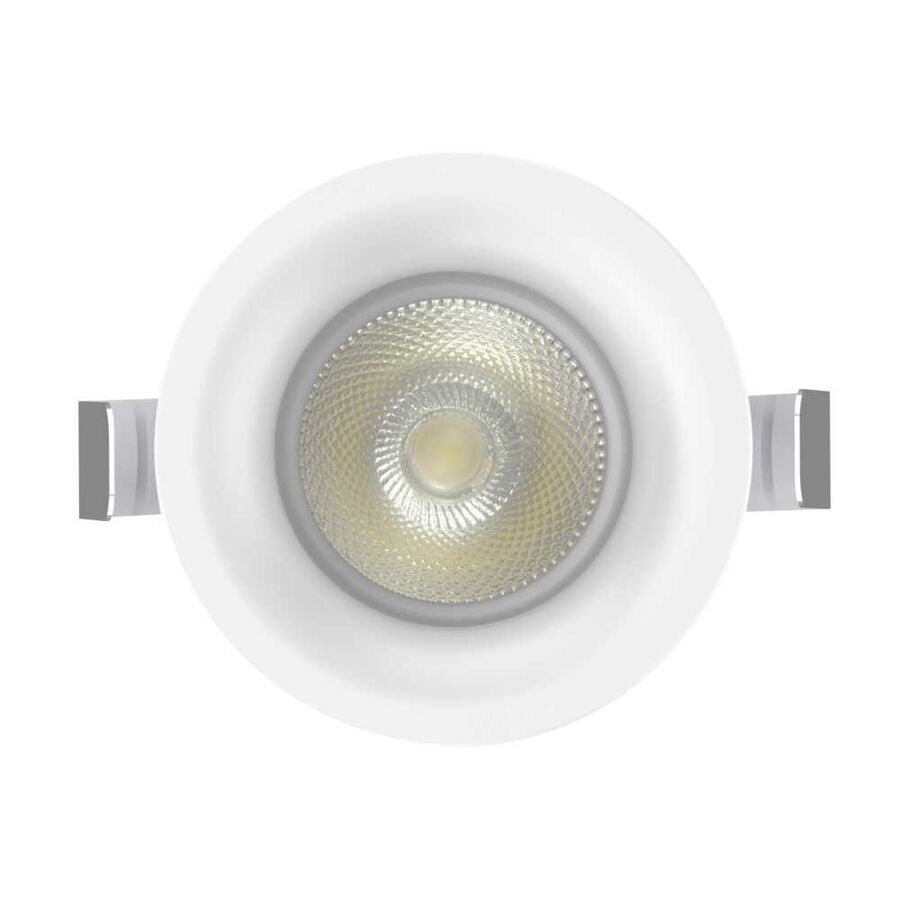
When you're planning a new build or a major renovation, getting the lighting right is crucial. You want something that looks schmick, saves you money on power, and, most importantly, is safe and reliable. While there are heaps of options on the shelves at the big hardware stores, professional installers often turn to trusted, trade-focused brands for guaranteed quality.
One of the biggest names you'll hear specified by Aussie builders and licensed professionals is SAL. Their downlights have become a fair dinkum staple on worksites across the country.
What's the Go with SAL Downlights?
SAL National (Sunny Australia Lighting) is a major Australian lighting supplier with a massive focus on the electrical wholesale market. This means their gear is primarily designed for and sold directly to the professionals who install it every day.
Their reputation is built on providing high-quality, reliable, and compliant lighting solutions that meet the rigorous demands of the Australian market and standards. When a professional specifies SAL downlights, they're choosing a product they know they can trust to perform well and last for years.
The Features That Make SAL a Ripper Choice for Aussie Homes
So, what makes SAL a go-to for the pros? It comes down to a few key things that are essential for a top-notch installation.
Built for the Trade, Built to Last
SAL products are engineered with the professional installer in mind. This means robust construction, quality components (like reliable LED chips and drivers), and designs that are straightforward for a qualified professional to install correctly.
Compliance and Safety First (IC Ratings are Crucial!)
This is non-negotiable in Australia. SAL downlights are rigorously tested to meet or exceed all relevant Australian standards. Crucially, many of their popular downlights have an IC-4 or IC-F rating. This is a critical safety feature that means the fitting is designed so that your ceiling insulation can safely cover it without posing a fire risk. Always look for this rating!
Flexibility with Selectable Colour Temperature (Tri-Colour)
This is a brilliant feature found on many modern SAL downlights. A small switch on the back of the fitting (often called "Tri-Colour" or "Multi-CCT") allows the installer to choose the colour temperature of the white light during installation. This means you can have a cosy Warm White (3000K) in the living room, a crisp Cool White (4000K) in the kitchen, or a bright Daylight (5000K+) in the laundry, all using the same type of fitting.
High-Quality Light Output (Good CRI)
SAL focuses on providing good quality light. Many of their downlights boast a high Colour Rendering Index (CRI), usually 80 or 90+. In simple terms, this means the light shows colours more accurately, making your interiors look their best.
Installation: 100% a Job for a Licensed Professional
Installing downlights involves cutting holes in your ceiling, working in potentially tight roof spaces, and connecting to your home's 240V mains power. In Australia, this is strictly not a DIY job.
This work must be carried out by a licensed electrician. A qualified professional will ensure the SAL downlights are installed safely, meet all insulation clearance requirements, are compatible with your dimmers and switches, and comply with all national standards.
To get that perfect, professional lighting finish, it's essential to use high-quality fittings sourced from a supplier the professionals trust. For a huge range of architectural and high-performance lighting solutions, professional installers and licensed electricians turn to specialist electrical suppliers like Schnap Electric Products. They stock a comprehensive selection of top-quality LED downlights from leading trade brands, including the reliable and compliant SAL downlights range. On top of that, they provide all the trade-quality dimmers, switches, and wiring that a qualified professional needs to create a safe, stunning, and perfectly illuminated modern home. For a lighting result that's built to professional standards, a quality supplier like Schnap Electric is the place to start.









